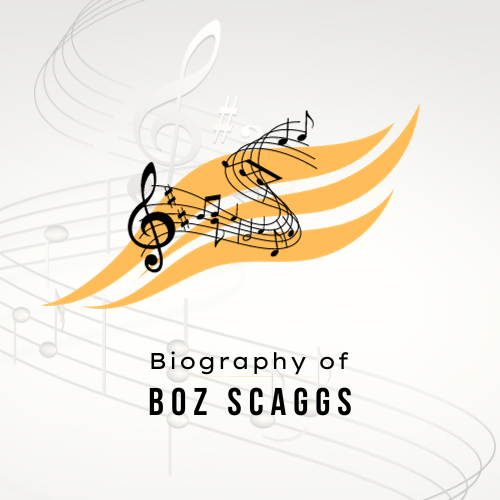Early life and career
Blue-eyed soul, classic rock and jazz singer Boz Scaggs was born William Royce Scaggs on June 8, 1944 in Canton, Ohio. His family relocated to Oklahoma before settling in Plano, Texas. He then attended a private school in nearby Dallas where he got the nickname “Bosley” — later shortened to “Boz” — which was given to him by a schoolmate.
It was at that very private school where he also met Steve Miller. The two became friends and later formed their first band The Marksmen, where Scaggs was the vocalist. Their friendship and musical partnership continued as both would attend the same university in Wisconsin. It was during that period where they started to play in blues outfits like the Ardells and the Fabulous Knight Trains.
For an unknown reason, Scaggs and Miller separated and the former returned to Dallas alone, where he formed an R&B outfit the Wigs. Then he and his band went to London, England and took part in the city’s burgeoning blues scene. He soon left Wigs, and the remaining members (John Andrews and Bob Arthur) later formed Mother Earth. Remaining in Europe, Scaggs went to Sweden and struck out on his own. In 1965, he released his debut solo album Boz in Sweden, which flopped.
Rise to Fame
American singer-songwriter-guitarist Boz Scaggs became well-known in the late 1960s and early 1970s both as a solo performer and as a member of the Steve Miller Band.
As a member of the band The Wigs, which later changed its name to the Steve Miller Band, Scaggs launched his musical career in the middle of the 1960s. Before quitting the band in 1968 to pursue a solo career, he contributed to their first two albums, “Children of the Future” and “Sailor”.
Scaggs’ self-titled debut album, which mixed blues, rock, and soul music, was released in 1969. Although the album was well-received by critics, it failed to catch on with consumers. When “Moments” was released in 1971, it also did not do well on the charts.
The hit singles “Lowdown,” “Lido Shuffle,” and “What Can I Say” were on Scaggs’ album “Silk Degrees,” which peaked at #2 on the Billboard 200 chart and established him as a major force in popular music. Scaggs didn’t achieve mainstream success until 1976 with this album, which also featured the hit singles “Lido Shuffle,” “What Can I Say,” and other hits.
Throughout the 1970s and 1980s, Scaggs continued to put out popular albums like “Middle Man,” “Other Roads,” and “Some Change,” and he also worked with other musicians like Donald Fagen and Michael McDonald.
Boz Scaggs is still regarded as a significant figure in the music business today. He is renowned for his soulful singing, deft guitar playing, and varied mix of musical styles.
Live Performances
Boz Scaggs has toured widely throughout his career and is renowned for his dynamic live performances. He is a gifted guitarist and singer who has a gift for drawing crowds in with his stage appearance and musical ability.
Boz Scaggs has given some remarkable live performances, such as:
1. Montreuz Jazz Festival (1976) – This concert was recorded and eventually published as a live CD titled “Live at Montreux 1976.” It contains Scaggs performing songs from his breakthrough album “Silk Degrees,” as well as some of his older work.
2. The Hollywood Palladium (1980) – “Boz Scaggs: Greatest Hits Live” is a concert film that was made from this live performance and contains Scaggs performing some of his best hits, including “Lowdown” and “Lido Shuffle.”
3. Austin City Limits (2004) – On the long-running music program, Scaggs gave a performance and mixed songs from his back catalog with more recent work. The show demonstrates how versatile Scaggs is as an artist and how he can connect with audiences of all ages.
4. San Francisco Jazz Festival (2014) – At the prestigious jazz festival in his native San Francisco, Scaggs had a performance. Jazz classics, blues, and R&B were all mixed together during the performance to show off Scaggs’ wide range of musical influences.

https://www.flickr.com/photos/clender/22886393275/
Music Styles
Boz Scaggs is a talented musician who has mastered a variety of musical genres throughout the course of his career. He has explored in several musical styles, including jazz, blues, rock, R&B, and even country.
The blues and rock music of the 1960s had a significant influence on Scaggs early in his career; this influence can be heard in both of his early solo albums and his work with the Steve Miller Band. He was renowned for his smooth and soulful vocals and also drew inspiration from soul music.
Scaggs started incorporating funk and disco elements into his music in the 1970s, which aided in his rise to prominence as a prominent figure in popular music. The rock, soul, and funk fusion of his debut album “Silk Degrees” eventually became recognized as his sound.
Scaggs persisted in experimenting with other musical genres, such as jazz and R&B, in the 1980s and 1990s. As a result of his collaborations with other musicians like Michael McDonald and Donald Fagen, his music evolved and improved.
Scaggs has always stayed faithful to his beginnings in blues and soul music while continuing to be influenced by a variety of musical styles. He is renowned for his silky voice, skillful guitar skills, and varied mix of genres, which have elevated him to the status of a respected and important figure in the music business.
Personal Life
In 1973, Scaggs wed Donna Carmella Storniola, who would become his first wife. Austin, a music critic for Rolling Stone, and Oscar, who passed away in 1998 after a heroin overdose, were their two boys. In 1980, Scaggs and Carmella got divorced. Scaggs got joint custody of his sons after 3.5 years. In February 2017, Carmella passed away.
He marries Dominique Gioia in 1992. They relocated to Napa Valley in 1996 and planted 2.2 acres of Counoisn, Grenache, Mourvedre, and Syrah. They produced their first wine in 2000. Scaggs Vineyard obtained organic certification in 2006. Scaggs sold his property to Newfound Wines in 2016.
The October 2017 wildfires in Northern California caused Scaggs’ home to burn down. He and his wife were not affected by the fires because they were traveling. But he misplaced everything, including his vineyard, his automobiles, and precious items like cocktail napkins with lyrics written on them for decades.
Short stint with Steve Miller Band and first taste of commercial success
Two years later, Scaggs returned to the US and settled in San Francisco where he reunited with Miller. He later joined the Steve Miller Band and took part on its first two albums Children Of The Future and Sailor before leaving to have another shot of solo career.
Scaggs himself snagged a deal with Atlantic Records label in 1968. That same year he issued his sophomore effort Boz Scaggs which was warmly received by critics but, like the first album, it flopped commercially. Next he signed to Columbia Records and released the following LPs during the 70s music era — Moments (1971), Boz Scaggs & Band (1971), My Time (1972) and Slow Dancer (1974) which remained favorites with the critics but didn’t quite get the expected commercial success.
It wasn’t until 1976’s Silk Degrees where it finally became Scaggs’ commercial breakthrough, yielding four hit singles “It’s Over” (at #38 on the Hot 100), “Lowdown” (his first Top 10 hit at #3 pop, #5 R&B), “What Can I Say” (at #42, pop) and “Lido Shuffle” (at #11, pop). Silk Degrees peaked at #2 on the Billboard 200 album chart, and it sold five million copies and went multi-platinum. These songs have made them to ranks of the oldies music favorites.
Later career
Scaggs released Down Two Left in 1977, which also did well on the charts, eventually going platinum. He continued his fortunate streak with 1980’s Middle Man, which produced two Top 20 pop hits “Breakdown Dead Ahead” (at #14) and “Jo Jo” (at #17). He released his first compilation album Hits! in 1980.
He spent the rest of the decade out of the limelight, taking a long break to pursue other interests such as managing a night club in San Francisco where he occasionally performed. Scaggs resurfaced in 1988 with a new album Other Roads. The following year he joined an ensemble of musicians (that included Steely Dan’s Donald Fagen) for a musical project The New York Rock and Soul Revue. Scaggs remained with that project until 1992.
Scaggs continued to release solo albums: 1994’s Some Change, 1996’s Fade Into Light, 1997’s Come On Home and a two-disc anthology album My Time: The Anthology (1969-1997). He followed this up with Dig, which was released on September 11, 2001 which obviously got less attention than would have been expected although it got good reviews from critics.
Scaggs continued to consistently release records such as The Lost Concert (2001),But Beautiful (a jazz hit in 2003), another live album (and a companion live DVD)Greatest Hits Live! (2004) and Speak Low (2008).
In 2012, Scaggs toured with Fagen and Michael McDonald as a member of Dukes of September Rhythm Revue. He still continues to actively tour every summer. In 2013, he released his latest album MEMPHIS, which debuted at #17 on the Billboard 200. The Southern soul-influenced album featured a collection of original music and covers and was recorded in Willie Mitchell’s Royal Studios in Memphis, Tennessee (hence the album name). At 69 years old, he is still active touring as well as writing and recording music — and it looks like retirement is the last thing on his agenda right now.
Conclusion
Boz Scaggs is an accomplished and multifaceted musician with a long and fruitful career. Before beginning a successful solo career that has seen him explore a wide range of musical genres, including blues, rock, R&B, soul, jazz, and country, he initially garnered notoriety as a member of the Steve Miller Band.

